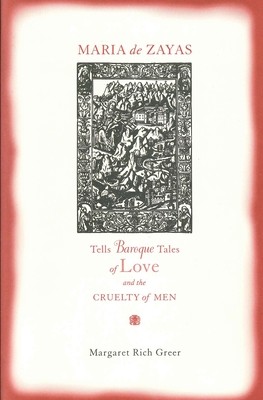
- We will send in 10–14 business days.
- Author: Margaret Greer
- Publisher: Penn State University Press
- ISBN-10: 027102822X
- ISBN-13: 9780271028224
- Format: 15.2 x 22.9 x 2.7 cm, softcover
- Language: English
- SAVE -10% with code: EXTRA
Maria de Zayas Tells Baroque Tales of Love and the Cruelty of Men (e-book) (used book) | bookbook.eu
Reviews
Description
MarÃa de Zayas y Sotomayor (1590-1650?) published two collections of novellas, Novelas amorosas y exemplares (1637) and Desengaños amorosos (1647), which were immensely popular in her day. During the nineteenth and early twentieth centuries, Victorian and bourgeois sensibilities exiled her "scandalous" works to the outer fringes of serious literature. Over the last two decades, however, she has gained an enthusiastic and ever-expanding readership, drawing intense critical attention and achieving canonical status as a major figure of the Spanish Golden Age. In this first comprehensive study of Zayas's prose, Margaret R. Greer explores the relationship between narration and desire, analyzing both the "desire for readers" displayed by Zayas in her Prologue and the sexual desire that drives the telling within the novellas themselves. Greer examines Zayas's narrative strategies through the twin lenses of feminist and psychoanalytic theory. She devotes close attention to the weight of Renaissance literary traditions and the role of Zayas's own cultural context in shaping her work. She discusses Zayas's biography and the reception of her publications; her advocacy of women's rights; her conflictive loyalty to an aristocratic, patriarchal order; her crafting of feminine tales of desire; and her erasure of the frontiers between the natural and supernatural, indeed, between love and death itself. In so doing, Greer offers an expansive analysis of this recently rediscovered Golden Age writer.
EXTRA 10 % discount with code: EXTRA
The promotion ends in 17d.07:52:01
The discount code is valid when purchasing from 10 €. Discounts do not stack.
- Author: Margaret Greer
- Publisher: Penn State University Press
- ISBN-10: 027102822X
- ISBN-13: 9780271028224
- Format: 15.2 x 22.9 x 2.7 cm, softcover
- Language: English English
MarÃa de Zayas y Sotomayor (1590-1650?) published two collections of novellas, Novelas amorosas y exemplares (1637) and Desengaños amorosos (1647), which were immensely popular in her day. During the nineteenth and early twentieth centuries, Victorian and bourgeois sensibilities exiled her "scandalous" works to the outer fringes of serious literature. Over the last two decades, however, she has gained an enthusiastic and ever-expanding readership, drawing intense critical attention and achieving canonical status as a major figure of the Spanish Golden Age. In this first comprehensive study of Zayas's prose, Margaret R. Greer explores the relationship between narration and desire, analyzing both the "desire for readers" displayed by Zayas in her Prologue and the sexual desire that drives the telling within the novellas themselves. Greer examines Zayas's narrative strategies through the twin lenses of feminist and psychoanalytic theory. She devotes close attention to the weight of Renaissance literary traditions and the role of Zayas's own cultural context in shaping her work. She discusses Zayas's biography and the reception of her publications; her advocacy of women's rights; her conflictive loyalty to an aristocratic, patriarchal order; her crafting of feminine tales of desire; and her erasure of the frontiers between the natural and supernatural, indeed, between love and death itself. In so doing, Greer offers an expansive analysis of this recently rediscovered Golden Age writer.


Reviews